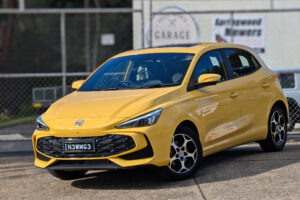
Errett Lobban Cord’s life could have been very different: he nearly struck gold with his first
motor car. It was called the L-29 because it made its debut in 1929 with power from
Lycoming, the aero engine wing of the Auburn car manufacturing company which Cord
owned. He had acquired the decaying Auburn company of Indiana, as well as the
legendary Duesenberg high-performance car makers, as part of a financial package.
Cord knew little about cars other than how to sell them. He was an outstanding salesman,
perhaps one of America’s greatest, and a financial genius. His engineering ideals were
inspired far more by fashion than by practical considerations.
From Auburn’s base in Indiana, it was apparent that front-wheel drive had a future as
Miller racing cars regularly beat conventional rear-wheel drive Duesenbergs at
Indianapolis. Cord knew that he could sell the advanced new front-wheel drive concept to
the American public if it could only be contained in a car which looked different. By
dispensing with the conventional propeller shaft between the transmission and rear axle
this would allow the seats to be mounted lower and the car to be made to look more rakish
and aggressive.
Cord sold himself on the idea immediately and bought up Miller’s patents, as well as the
Miller transmission engineer, Cornelius van Ranst. Van Ranst soon pointed out that,
although the new transmission worked well on a racing car, it would not necessarily do so
on the road since a tight turning circle was almost impossible to achieve.
Cord’s answer to this was that, as the engineer, it was up to van Ranst to fix such
problems; he needed front-wheel drive and a low-line body to sell the cars.
From the initial drawings Cord was not enamoured with the efforts of his resident stylist so
he summoned project engineer John Oswald and outlined how he imagined the car should
look: a racy-looking car with a chassis which would make it the lowest on the road, and a
body along the lines of a show car which had been displayed at a New York salon.
Duly briefed, Oswald was dispatched to draw up his plans on a blackboard in the Auburn
car plant. Later Cord dropped into the factory, took one look at the chalk drawing,
approved it, and appointed Oswald designer, draftsman, metal worker, body builder,
engineer and foreman on the experimental L-29.
In the meantime, van Ranst had devised a way of turning the straight eight-cylinder 4934
cc in-line side-valve Lycoming engine round in the chassis to drive the front wheels
through Miller’s front suspension with new constant-velocity joints which reduced the
turning circle from a mammoth 12.8 metres to a very tight 6.4 metres.
When the first prototype was finished and approved it was sent to the company’s test track
– a ploughed field across the road. The test track was so bumpy that the saloon’s doors
continually flew open. To overcome this Auburn’s chief engineer had two channel sections
of steel welded across the chassis rails to invent the X-frame bracing, which was to
become a hallmark of American cars for the next 25 years.
When the next prototype was rushed through, Cord drove it hell-for-leather on a 3200km
trip to old haunts in Phoenix, Nevada. As nothing fell off the car Cord turned up to the
astonishment of Auburn executives attending that year’s automobile show. Cord burst in
on the gathering to send terrified sales staff scurrying about publicising the L-29. ‘Years
have been devoted to developing a car which needs no selling to those who can afford it,’
said Cord, glossing over the fact that it had been conceived, built and tested in only eight
months.
The motoring Press readily took to this newcomer. The Cord’s glamorous body and front-
wheel drive more than compensated for the mundane mechanical components which had
been lifted from Auburn and Lycoming parts bins. Top coachbuilders were excited by the
opportunity to mount long, low, rakish bodies on to a chassis only 406mm from the ground
at a time when the average was half as high again. None of them cared that the about-
face engine concentrated its weight far back from the driven wheels, which thus lacked
traction on a slippery hill. They were dazzled by the powerful appeal of a bonnet half the
length of the complete car.
Unfortunately for Cord the collapse of Wall Street occurred two months after the L-29’s
launch. After prophesying demand for at least 10,000 a year, Cord had to be content with
4500 over three years, before gambling again with even more adventurous coffin-nosed
styling. The later cars proved even more costly fiascos, leaving the L-29 as a lingering
memory of what might have been, had there been a little more time to achieve perfection.








